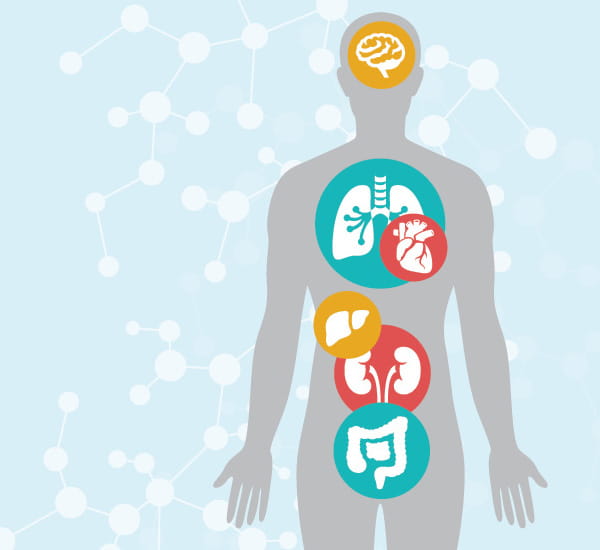Arrhythmogenic cardiomyopathy (ARVC)
A change in certain genes is associated with arrhythmogenic right ventricular cardiomyopathy (or ARVC), a rare, inherited heart disease.
An arrhythmia is an abnormal heart rhythm. Arrhythmias in ARVC can be severe enough to lead to cardiac arrest. Cardiac arrest is a sudden loss of heart function, breathing and consciousness.
DSP, PKP2, DSG2, DSC2, and JUP gene changes
These genes help the body make structures that attach heart muscle cells to one another. Changes in these genes may disrupt the structural connections between heart muscle cells. This also impairs their ability to communicate with each other. These changes may cause arrhythmias and ARVC.
TMEM43 gene change
This gene provides instructions for a protein in the cell nucleus. Changes in this gene may “turn on” fat cell production in the heart. This is commonly seen in ARVC.
Understanding your risk
Having an ARVC gene change does not mean a person has heart disease. Many people with these gene changes may have healthy hearts. People who have ARVC gene changes should meet with a cardiologist to have heart tests. These tests include: resting electrocardiogram (ECG), 24-hour Holter monitor, and cardiac imaging (MRI or echocardiography).
Geisinger researchers are enrolling people with ARVC gene changes into a new research study. Scientists would like to learn more about why some people with gene changes develop ARVC while others do not. The researchers are collecting data about exercise habits and family health history. They are also using advanced medical imaging to measure heart function in new ways. These data will help scientists learn more about how to better care for people at risk for ARVC.
Please email heartresearch@geisinger.edu to learn more about this study.
Living with ARVC or an ARVC gene change
You may need a personalized plan to reduce your risk if you have an ARVC gene change but have not been diagnosed with ARVC. You should have clinical follow-up every 2 to 5 years to look for new symptoms.
You should consult your doctor for treatment advice if you have been diagnosed with ARVC. Common treatment options for ARVC include:
- Lifestyle changes. Patients with ARVC should not play competitive or endurance sports.
- Medication
- Catheter ablation
- Implantable Cardioverter Defibrillator (ICD)
- Heart transplantation
What does this mean for my family?
Family members related by blood may have the same gene change. Your children and siblings have a 50 percent chance to have the same gene change. Distant relatives may also be at risk.
At-risk family members can learn if they have the same genetic risk from a simple genetic test. A genetic counselor or doctor can arrange for testing. Most insurance companies will pay for this testing. Genetic test results can be used to guide care.
ARVC can impact younger patients. Healthy gene carriers and family members should be offered repeat clinical exams. This is most important during the teen years and young adulthood.

